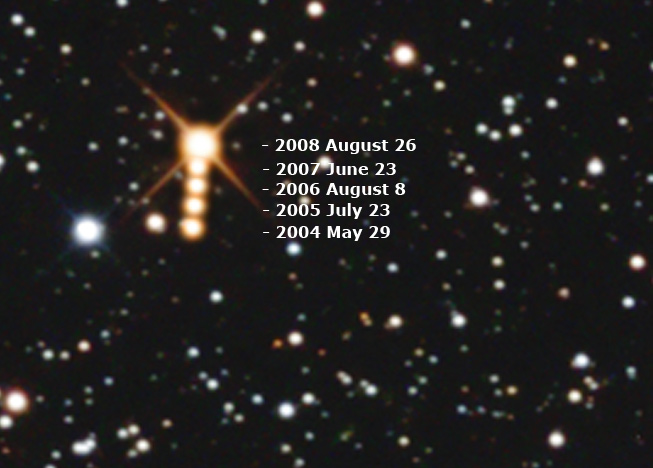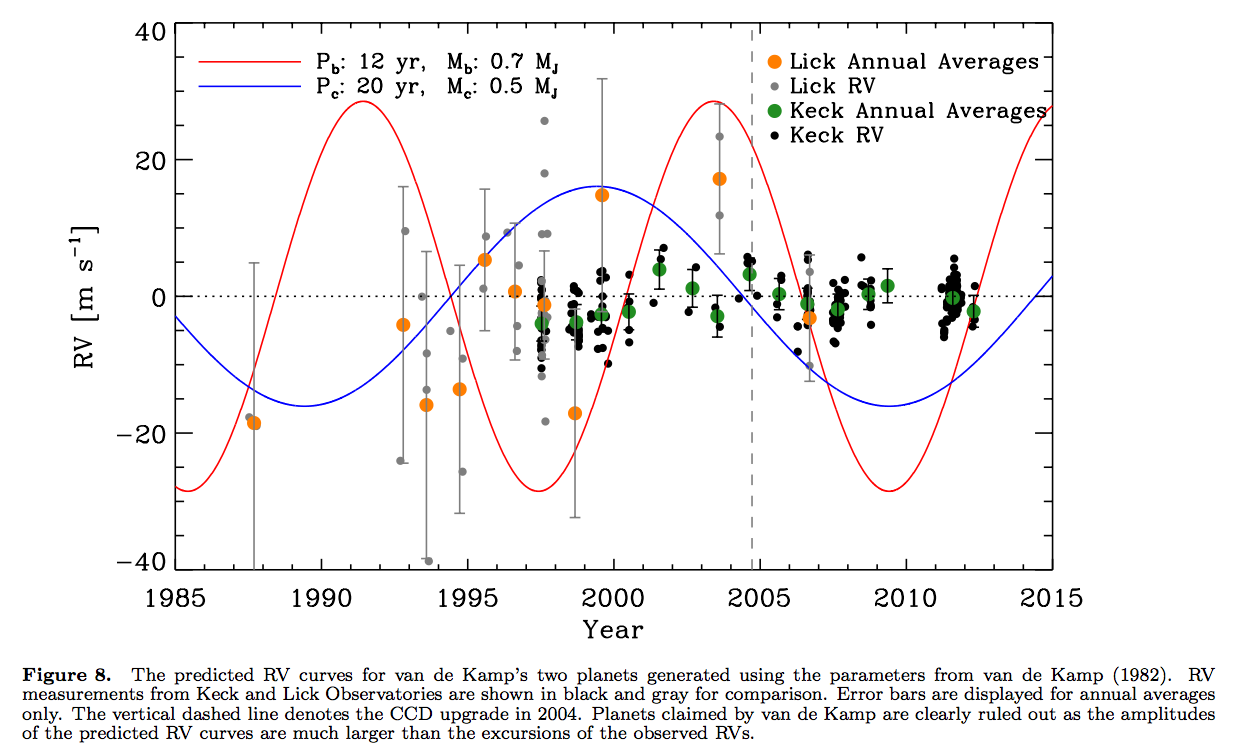Darn. I’d really like to keep partisan politics out of science to the degree we can, but it looks like there’s going to be a flare up.
This is not to say that politics and science shouldn’t mix. I actually believe the opposite. Science is a governmental, social, and international endeavor, and so politics is an essential part of the profession — the AAS has its headquarters in Washington for this reason. Astronomers are encouraged to go to Washington to argue to Congress for funding for our field, and we have an obligation to fight for political and social rights and freedoms of our fellow astronomers (as citizens and moral beings we also should fight for non-astronomers, but that doesn’t have anything to do with astronomy). Some of our work, such as asteroid watches, solar physics, and atmospheric science, has direct implication for social policy, so we need to wade in there as well. The AAS does these things well.
But partisan politics that does not touch on these elements should be left alone, because it would unnecessarily divide our community over non-astronomy topics and tarnish our reputations as objective seekers of truth. The standards of truth in partisan politics are so appallingly low (what will the press print without qualification, what won’t get someone convicted of perjury or defamation) that scientists, with ostensibly high standards for truth and persuasion, cannot help but be sullied by the exercise. Individual astronomers can, and in many cases should, dive into the fray as citizens, but the AAS and our other official bodies and organizations should not.
On the cover of the latest AAS Newsletter (AAS-members-only until November) our new president, David Helfand, argues that astronomers should fear the growth of entitlement spending and fight to check it for the good of the field and the good of the profession.

In the column, Dr. Helfand:
- clearly identifies the growth of “transfer payments”, which he uses synonymously with “payments to individuals” and “entitlements”, as the primary obstacle to proper levels of spending on science and astronomy now and in the future.
- specifically points to the “ratio of investments [including science] to entitlements” which “has changed from 1.15 to 0.27 over the past 50 years.”
- shows a chart showing how investments have decreased and payments to individuals have increased over the last 50 years as a fraction of the total federal budget (the data are sourced, the source of the figure is unclear)
- says that he brought up entitlement growth in the office of “one office[] traditionally very supportive of the scientific enterprise” on Capitol Hill and was told that “even raising the issue would greatly surprise and disturb some of our most loyal allies.”
- compares those who hold this attitude to climate deniers, analogizing denial of entitlement growth to denial of the growth in concentrations of atmospheric carbon and mean global temperature.
- attempts to inoculate himself against charges of partisanship by stating “I was careful to avoid advocacy of a particular approach: increased taxes, decreased spending, or, what every bipartisan commission has recommended, a combination of the two.”
Now, if unsustainable growth of spending or decrease in revenue in any area of the federal budget threatens to create such unmanageable debt that astronomy will not be sufficiently funded, then it is certainly appropriate and not at all partisan for the AAS to insist that the problem be fixed.
However Dr. Helfand’s framing of the issue is so specific, and so reminiscent of talking points most commonly heard from partisan Republicans, that his column reads more like a polemic against the social safety net than a sober assessment of the federal budget. Let me describe some of the ways in which I feel Dr. Helfand has framed this important issue in an unnecessarily partisan manner:
1) He compares the ratio of investments to one collection of budget items — entitlements — but not to the budget as a whole, including defense. (Note that the lines on his graph conspicuously add to less than 100%). If Dr. Helfand’s concern is investment spending, surely the objective position would be to consider all other government spending, not just entitlements?
Or, if his point is that a particular entitlement program threatens the entire budget balance, surely the focus should be on that program and not a broad class of “entitlements” (which includes many small and many solvent programs including student loans, Pell grants, college tax credits, and 529 college savings programs)?
This sort of rhetorical slight-of-hand (a cousin of “
socialsecurityandmedicare“) is often used by partisans to use the uncontrolled growth of one program as a justification for making cuts to other, unrelated programs. I suspect that Dr. Helfand is not intentionally engaged in this sort of deception here (he may not even realize that his column is arguing against the growth of things like Pell grants). Rather, it appears that he is simply repeating the talking points of Committee Chairman Wolf (R-VA) without digestion.
2) The graph he shows begins in the Sputnik/Apollo era, when investment was at a maximum, and before Johnson’s Great Society initiatives, when entitlement spending ballooned. The contrast between 1.15 and 0.27 is thus “cherry picked” in two ways: temporally, and with a selective and questionable choice of denominators. This is to be expected in partisan politics, not in a sober assessment of the overall budget environment.
3) It is not just certain “loyal allies” that are surprised and disturbed by Dr. Helfand’s focus on “entitlements” as a whole; many of his fellow astronomers will be, too. This is why comparing such attitudes to climate change denial, which is perpetrated by the dishonest and the misinformed, is so outrageous. Surely Dr. Helfand knows that the charge of being like a denialist is among the most grave and severe he could hurl at a scientist? Did he not expect that many of his fellow astronomers would be strongly and personally offended by this, or was that in fact his intention? Neither option reflects well on Dr. Helfand.
4) His openness to tax increases as a solution is actually a non sequitur to his overall argument, and so fails to insulate him from accusations of partisanship: If uncontrolled, exponential entitlement growth is the problem, then how could increased taxes be anything but a short-term solution?
Of course, many astronomers support increasing taxes to fully support increased and sustainable entitlements as a desirable step towards a more just, educated, and flourishing society. Much of Western Europe has made this sort of choice without sacrificing science. This goal is orthogonal to increased spending on science and investment, not antiparallel to it. It is also completely consistent with checking unnecessary increases in the health care costs inherent in some entitlement spending. Perhaps this is Dr. Helfand meant, but one must read his words quite generously to say so.
Again, my purpose is not to argue with Dr. Helfand, or anyone reading this blog, about the proper future form of the overall federal budget. I will do that as a citizen but not from my position as an astronomer [if you know me as a citizen, feel free to ask me about it in another forum]. Rather, I wanted to point out that the reason Dr. Helfand will get pushback from his colleagues for this column, and silent stares in the halls of Congress from our “loyal allies”, is that he has apparently bought into a particular, partisan framing of the budget debate.
In his column, Dr. Helfland relates a story wherein Chairman Wolf asks President Elmgreen (his predecessor) why we astronomers are not “up in arms and doing something about entitlements and corporate tax breaks.” Dr. Helfand continues “The obvious answer is that it is the job of his colleagues to fix those problems, but I think he has a point–because those colleagues report to us.” I agree with Dr. Helfand that we, both as citizens and through our professional society, should ensure that our nation’s financial future is sound. But by choosing to vehemently attack government “payments to individuals” as the enemy of astronomy in his capacity as AAS President on the front page of our newsletter he has unnecessarily steered the AAS away from advocacy for science and astronomers and into partisan politics. I think this was a mistake.



 While all of this was happening, I was looking for work. Fortunately for me, Jamie Lloyd, a professor at Cornell and someone I had known at Berkeley when I was a younger student, needed someone with planet hunting experience to design the survey and planet-fitting software for TEDI, an experimental Doppler instrument at Palomar. I spent a year and a half at Cornell working with his group including three people I keep in touch with still:
While all of this was happening, I was looking for work. Fortunately for me, Jamie Lloyd, a professor at Cornell and someone I had known at Berkeley when I was a younger student, needed someone with planet hunting experience to design the survey and planet-fitting software for TEDI, an experimental Doppler instrument at Palomar. I spent a year and a half at Cornell working with his group including three people I keep in touch with still: 


 The next component is that it is random. If I write out the number pi in binary, I get an apparently random collection of 1’s and 0’s that go on forever and never repeat. I can also look at the binary representation of the Complete Works of William Shakespeare as a big string of 1’s and 0’s. As I look at more and more bits of pi, then the probability that I will find exactly this string grows with every set of numbers I look at, if the numbers are truly random (which, I will note, they are not). There must be some number of bits so large that the probability is so close to 1 that I will be satisfied that the Romeo and Juliet is, indeed, encoded in pi. Of course, also encoded in pi is a version of Romeo and Juliet where all of the Capulets are named “Beavis”, all of the Montagues are named “Butthead”, and all of the swords are whoopie cushions.
The next component is that it is random. If I write out the number pi in binary, I get an apparently random collection of 1’s and 0’s that go on forever and never repeat. I can also look at the binary representation of the Complete Works of William Shakespeare as a big string of 1’s and 0’s. As I look at more and more bits of pi, then the probability that I will find exactly this string grows with every set of numbers I look at, if the numbers are truly random (which, I will note, they are not). There must be some number of bits so large that the probability is so close to 1 that I will be satisfied that the Romeo and Juliet is, indeed, encoded in pi. Of course, also encoded in pi is a version of Romeo and Juliet where all of the Capulets are named “Beavis”, all of the Montagues are named “Butthead”, and all of the swords are whoopie cushions. No, I’m not writing about a
No, I’m not writing about a